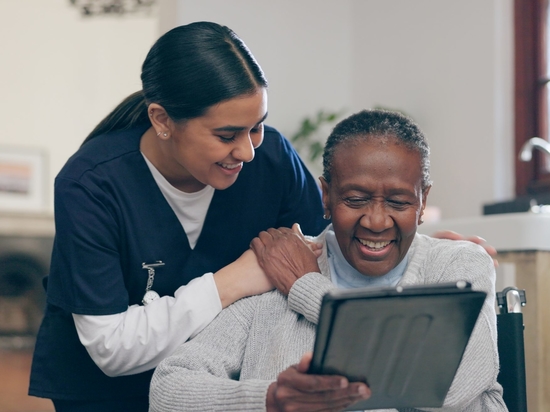
#Industry News
Healthcare Needs to Communicate Better
When miscommunication can lead to misdiagnosis or worse, extra precautions need to be taken. Learn how to streamline doctor-to-doctor and doctor-to-patient communications and optimize your approach to treatment.
There are thousands of reasons why communication in healthcare is so difficult, from employee/employee communication to doctor/patient communication. Let’s instead try to focus on the solutions.
We’ve gathered information on hospital communication, what works and what doesn’t, complete with suggestions about the kind of technology that can transform everyday tech like computers on wheels into communication hubs for every link along the communication chain.
Keeping the Lines Clear Between Staff Members
According to a survey conducted through APPrise Mobile, 78% of healthcare communicators found it difficult to maintain communication with healthcare employees.
Another study by CRICO Strategies shows that lack of communication and miscommunication are the cause of 30% of malpractice suits. While some of these are cases of patient-doctor communication, a good chunk are also examples of botched communication between staff.
But how do we improve channels of communication on the hospital side? First off, electronic medical records must be accessible at all times. This can be difficult due to HIPAA and basic security concerns. That’s where devices like dedicated medical computers and medical tablets come in to play. The benefit of a hospital-owned, dedicated medical computer is that they can come with built-in security options like biometric fingerprint readers, RFID badge scanners, and smartcard/CAC readers.
When set up properly, any nurse or doctor can grab any desktop terminal or medical tablet and unlock patient data without concern since two-factor authentication is extremely difficult to crack. This increases clinician knowledge of their patient and makes that knowledge more readily accessible, decreasing the likelihood of mistakes.
It’s also important to train clinicians on how to flag important information in the EMR itself. If a doctor simply misses a critical symptom or skips over it , that can have tragic repercussions.
However, with proper training, doctors and nurses can flag certain data fields as “important,” complete with a visual indicator. A small change that could literally save lives.
Talking with Patients Isn’t Enough
Staff-patient communication is just as important as staff-staff communication.
There are two forms of communication with patients: communication in the healthcare facility and communication outside of the facility. In-person communication has always been the most vital, but it’s what happens after the doctor is gone that really determines a patient’s outlook.
According to a study by UCSF, 25% of hospital readmissions could likely be prevented with better patient communication.
Communication in the Facility
There are physical or mental limiters that can affect patient information absorption such as visual or hearing impairments. That’s why it’s wise to provide patients with multiple options for communication so they can use the form that works best for them.
A combination of training and technology can allow patients to retain important health information. For instance, doctors can help visual learners with a nearby medical monitor, showing them relevant anatomical diagrams or procedure videos.
For hands-on learners, a doctor or nurse can guide a patient through interactive learning materials on a touch screen tablet, ensuring important information about the patient’s condition isn’t missed.
A patient who understands their condition becomes a partner in their ongoing health instead of a helpless bystander.
Communication Outside of the Facility
Most of a patient’s life is outside of the exam room. They need to be empowered with the knowledge that will help them make healthy choices after treatment.
Telehealth apps have created an environment where patients can be treated without a visit to the office. This also includes mobile health apps like FitnessTracker, programs that track blood sugar, and even patient portals. Other apps actually send notifications to patients, reminding them about appointments, when to take medication, and a hundred other health reminders that can make a huge difference.
Encouraging patients to make use of these apps can greatly increase patient outcomes while also limiting readmissions and unnecessary appointments.
Silence is NOT Golden
When it comes to healthcare, silence kills. Whether that silence (or miscommunication) is between clinicians or patients, mistakes that otherwise would be unthinkable happen on a daily basis.
If you’re thinking of trying out new communication methods or learning more about deploying medical computers and other platforms, reach out to Cybernet today.





